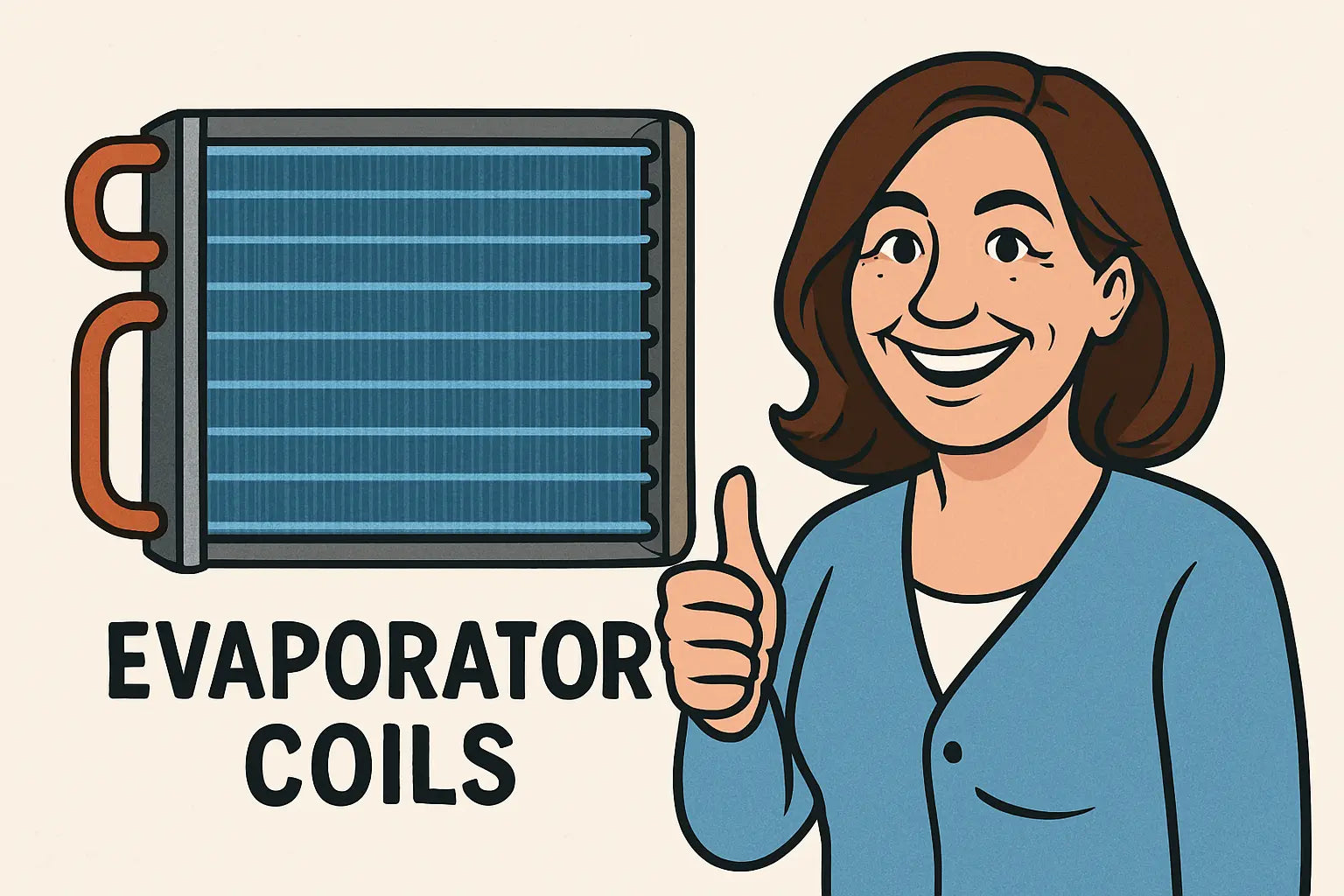Hey Friend 👋
Samantha here—your go-to for all things HVAC, family comfort, and no-fuss fixes that actually work. You’d be surprised how many messages I get that start with:
“My AC is blowing warm air—do I need a new unit?”
And nine times out of ten, we trace it back to one sneaky culprit: the evaporator coil.
If your system isn’t cooling like it used to or your electric bill is creeping up 👀, it might be time to consider a coil replacement. Let's dig into the signs, causes, and what your best options are—whether you're DIY-inclined or calling in the pros.
So… What Is an Evaporator Coil Again?
Think of it as the heart of your air conditioning. The evaporator coil is where your refrigerant absorbs heat from indoor air. It sits inside or near the air handler and cools the air as it passes over the coil.
If it's corroded, leaking, frozen, or just plain worn out, your whole system suffers.
Here’s a simple visual breakdown from Energy.gov that helped me early on.
Major Signs It’s Time for a Replacement
1. Your Home Isn’t Cooling Properly ❌
If your AC is running but the temperature isn’t dropping, your coil might be losing efficiency—or worse, leaking refrigerant. A quick fix might be a refrigerant top-off, but that’s a band-aid, not a cure.
2. Your Coil Keeps Freezing Over
I’ve had this happen twice—both in the middle of a summer heatwave 😩. Ice buildup usually means poor airflow, low refrigerant, or a failing coil. If you keep thawing it and it keeps coming back? Time to investigate deeper.
Check out this cool diagnostic guide from Carrier on frozen coils.
3. Your Energy Bills Are Skyrocketing 💸
This is one of those signs that creeps up slowly. You may not notice it at first, but if your system is overworking to compensate for a failing coil, it’ll show up on your utility bill.
Want to track it better? I use EnergyStar’s Home Energy Yardstick to compare month-to-month usage. Super easy.
4. There’s a Refrigerant Leak (Yes, Even R-32)
R-32 is more efficient and climate-friendly than the older R-410A, but if your coil corrodes and leaks, it can still lead to expensive refills and poor performance.
Leaks aren’t just messy—they’re a sign your coil is near the end of its life.
Check your system for the oily residue that often accompanies leaks. If you find it, don’t delay.
How Long Do Coils Actually Last?
Most evaporator coils last 10–15 years with regular maintenance. If your system’s within that window and acting up, replacing the coil may give you several more years before you need a full system swap.
Here’s a great breakdown from Trane on when to replace your AC parts versus the whole unit.
Can You Just Repair It Instead?
Sometimes, yes! But that depends on:
-
The age of the coil
-
Whether it’s under warranty
-
The type of damage (leaks usually mean replacement)
-
The cost of refrigerant and labor
Here’s a rule of thumb I live by:
If repairs cost more than 50% of what a replacement would, go new. Especially if the rest of your system is still in great shape.
The Hidden Cost of Not Replacing Your Coil 😬
Putting off replacement can actually cause more problems. You might deal with:
-
Constant ice-ups
-
Reduced airflow
-
Compressor failure
-
Mold growth inside your air handler
And let me tell you, a burnt-out compressor is way more expensive to fix. The coil might seem like the “small” component—but it does the heavy lifting.
Choosing the Right Replacement Coil
You’ll need to match the coil with your existing system in terms of:
-
Tonnage (cooling capacity)
-
Orientation (vertical, horizontal, or multiposition)
-
Refrigerant type (R-32 if you’re upgrading or already on it)
-
Brand compatibility
Lucky for you, The Furnace Outlet has a full collection of evaporator coils in all sizes and styles to fit most setups.
Shopping tip from yours truly: if you’re unsure about the model number or coil type, snap a pic of your current setup and compare it to the listing specs—or send it to a tech for confirmation.
Pro Tip: Keep It Clean to Extend Coil Life
Regular cleaning helps delay replacement, so I always recommend:
-
Replacing your air filter every 1–3 months
-
Scheduling yearly tune-ups
-
Cleaning the coil with a non-corrosive foaming cleaner
-
Checking for clogs in the condensate line
Final Thoughts from Samantha 💬
Friend, if your evaporator coil is giving you trouble, don’t ignore the signs. I’ve been there—sweating it out while waiting for a tech appointment that took a week to book 😓. Knowing when to replace it (and having a resource like The Furnace Outlet at your fingertips) makes all the difference.
Having sizing questions? Visit: What Size Evaporator Coil Do I Need? (BTU Matchups Explained).
Whether you’re upgrading to a high-efficiency R-32 system or just need a reliable replacement, the coil is not the place to cut corners. It’s the quiet hero of your comfort—and when it’s running right, your whole home feels better.
Until next time, stay cool and stay smart 🧊💡
—Samantha, Home Comfort Advisor







